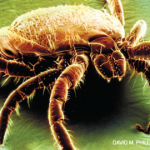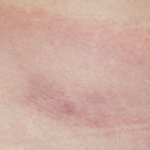Individuals in subgroup 1 reported lower rates of disability and higher self-efficacy relative to the other groups. Patients in subgroup 2 had higher blood pressure and a higher percentage of participants with an abnormal C reactive protein level than patients in subgroup 1. Individuals in subgroup 3 tended to be younger, have longer illness duration, were more likely to have received prior intravenous antibiotic treatment and tended to have prior neurologic pathology. Patients in subgroup 3 also reported higher levels of depression and migraine headaches than those in the other groups. Patients in subgroup 3 were less likely to report an annual household income of more than $100,000.
The authors conclude their paper by suggesting their results may provide a framework for thinking about the symptom heterogeneity of patients with post-treatment Lyme disease, as well as lead to more targeted interventions or novel treatment approaches that address the multiple factors contributing to continued illness in patients with post-treatment Lyme disease.
“Rheumatologists are going to get [post-Lyme patients] referred to them because they all have musculoskeletal symptoms,” says Dr. Aucott. He suggests rheumatologists pay careful attention to those patients who have musculoskeletal symptoms with low mood-related symptoms in (subgroup 2) because these patients may be at risk of developing inflammatory arthritis and will most likely respond to medications used to treat reactive arthritis and spondyloarthritis.2 In contrast, patients in subgroup 3 may be more likely to respond to medications that affect both pain- and mood-related symptoms.
Dr. Aucott describes this area of research as an evolving story and notes that his research center is discovering that some of patients in subgroup 2 have enthesitis. “These patients will likely respond to the therapies that rheumatologists know how to prescribe,” says Dr. Aucott. His laboratory is currently investigating whether B. burgdorferi may be triggering an inflammatory process that results in musculoskeletal conditions in these patients.
Lara C. Pullen, PhD, is a medical writer based in the Chicago area.
Reference
- Rebman AW, Yang T, Aucott JN. Symptom heterogeneity and patient subgroup classification among US patients with post-treatment Lyme disease: An observational study. BMJ Open. 2021 Jan 13;11(1):e040399.
- Arvikar SL, Crowley JT, , Sulka KB, et al. Autoimmune arthritides, rheumatoid arthritis, psoriatic arthritis, or peripheral spondyloarthritis following Lyme disease. Arthritis Rheumatol. 2017 Jan;69(1):194–202.



